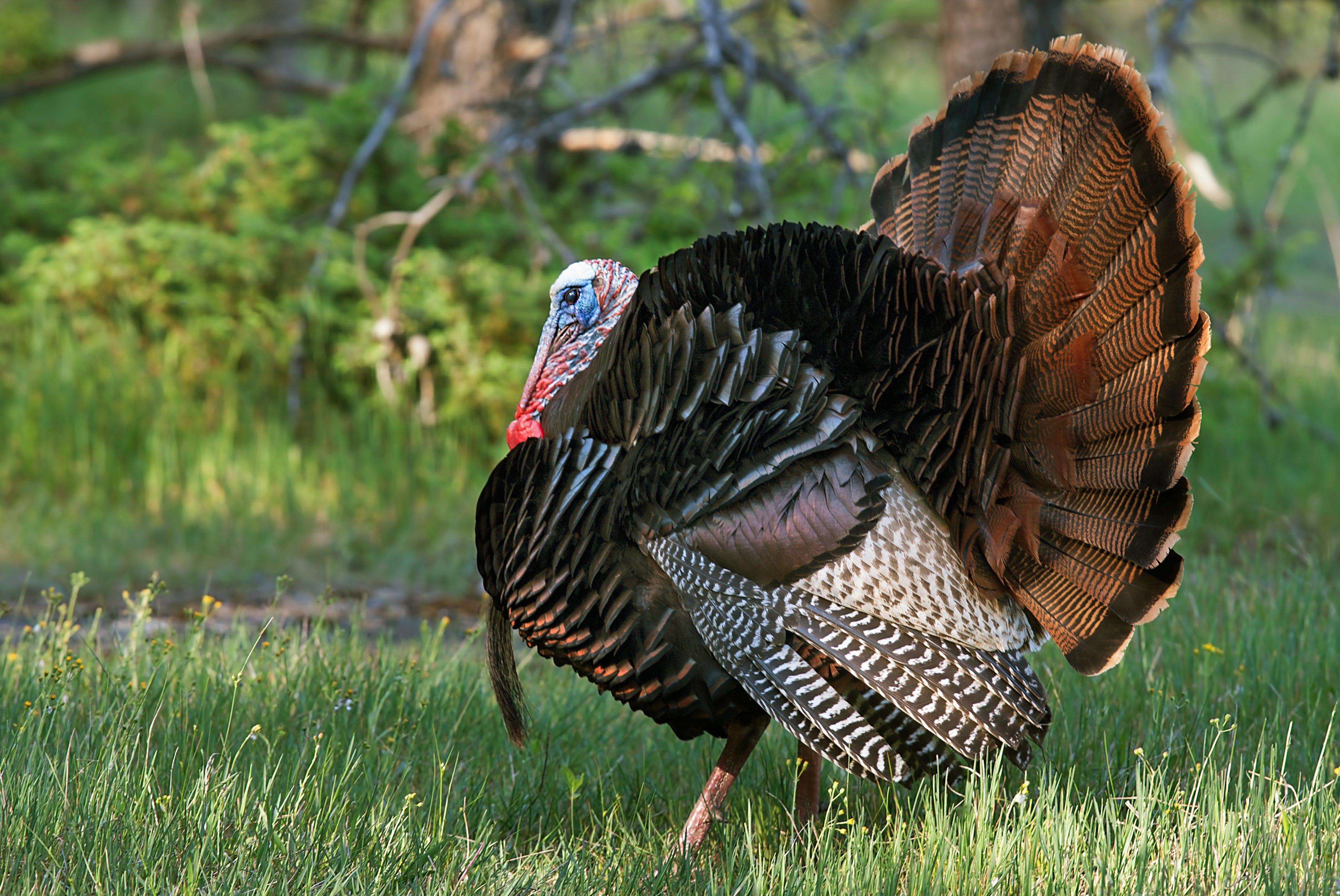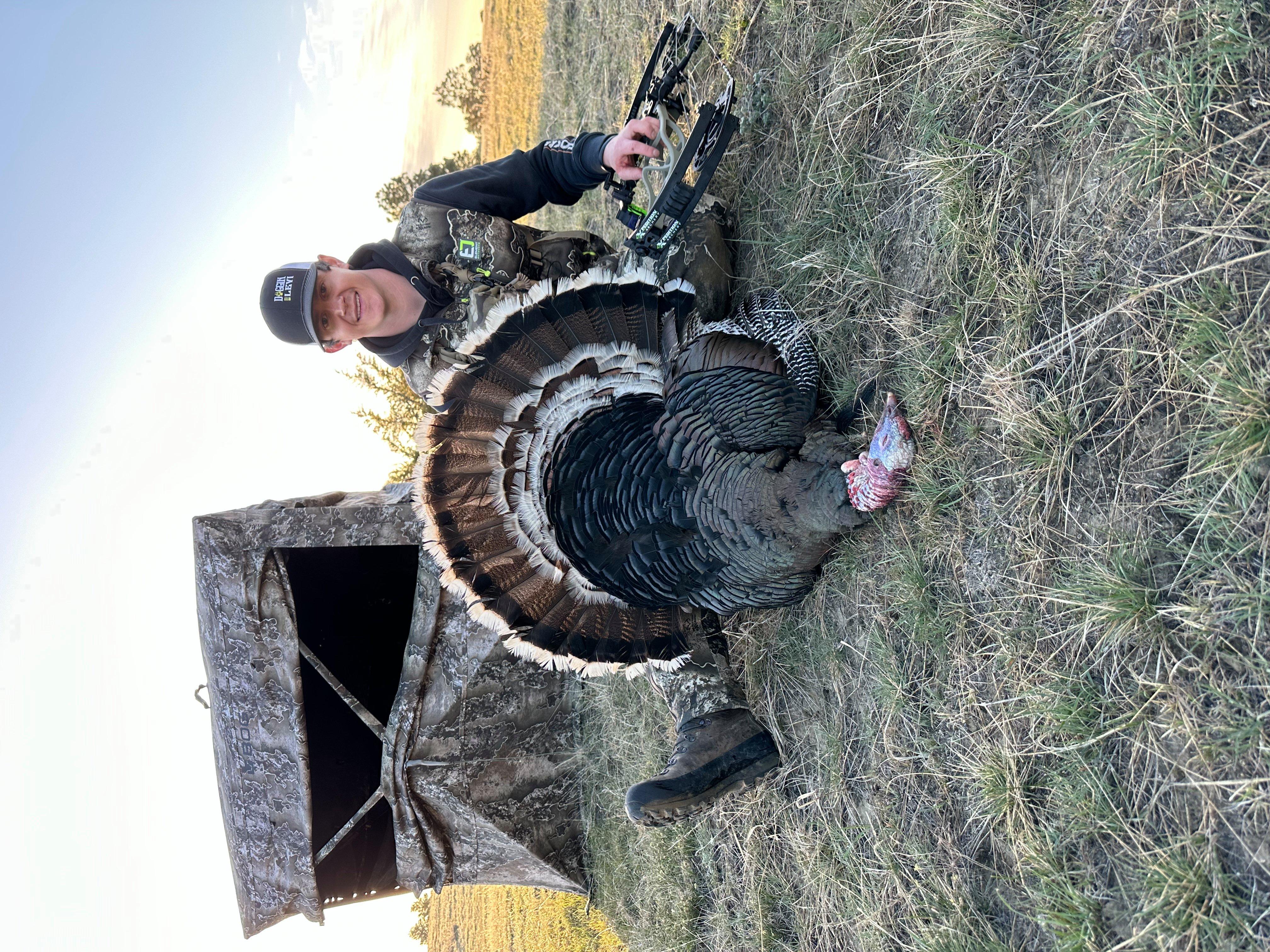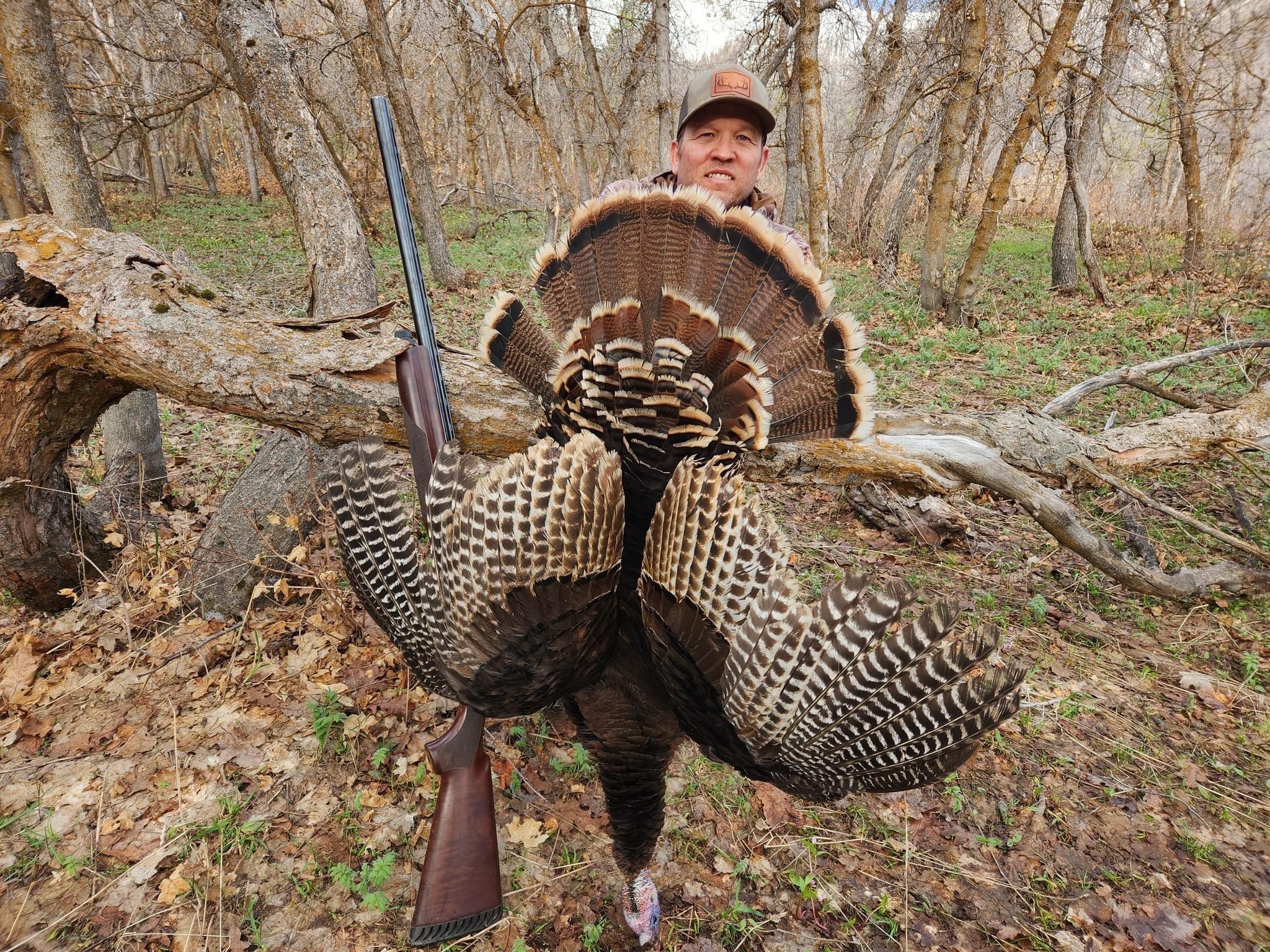Gobbling reports were all over the board from last week, but better weather should have toms doing their thing later this week

If you’re hunting the Midwest or Northeast, calling and decoys should prove effective this coming week. Image by Jim Cumming
I finished my South Dakota bow hunt this past week with a close call. My brother-in-law and I hunted about 75 yards apart. I set two hen decoys, and he tried a hen and a jake. We heard only two gobbles. Part of the flock — a tom, a jake and four hens — approached my decoys. The hens and jake mingled amongst them, in fact. At 22 yards, though, the trailing tom suddenly veered left, strangely leaving the hens under the jake’s supervision.
He circled way around my blind and reappeared with another tom about 40 yards away. The toms hooked up with the ladies and then roosted. They had no interest in my brother-in-law’s jake decoy. Had the second tom not been present, I believe the initial gobbler would’ve followed the script. His impulsive decision ultimately saved his life by seconds.
Logan Sluggett of Doggin’ With Levi recently had success in Montana. “He called three toms to his DSD decoys at 8 yards,” Levi Johnson said of Sluggett’s hunt. “He was calling softly with a FOXPRO diaphragm call when the birds were roosted. They came in gobbling 10 minutes after daybreak. He shot his tom from a BOG blind with his Xpedition bow. There were no hens with those toms. I’m noticing that hens that are with toms are leaving them at around 1 p.m.”

If you’re hunting the Midwest or Northeast, calling and decoys should prove effective this coming week. Image by Logan Sluggett
Utah resident Scott Flinders checked in after his successful outing. “We had a really big winter and a late spring,” he said, “so turkeys are behind schedule in their movements and breeding activity. Most of the toms are henned-up and very call-shy. I called in a few jakes over the first few days, but the toms wouldn’t play.”
With most birds unresponsive, Flinders used the terrain to stalk a tom strutting with two hens. “We got some rainfall on May 4,” he said. “The following morning, the ground was soft and quiet. I used a hill as cover while I approached. When I peeked over, the birds were in range, and I took the tom.”
Realtree.com contributor Brian Lovett recently hunted Wisconsin and Wyoming. “I hunted opening day of Wisconsin’s time period B in southwestern Wisconsin,” he said. “Bird numbers seemed very good. I heard six or seven gobblers on the limb. Most quit gobbling when they flew down and got with hens. I got on a bird at about 10 a.m., but he was with a hen in a difficult spot. While working him, another gobbler fired up and came several hundred yards to the call, and I killed him. Everything seemed to be ‘on schedule’ for turkeys in that area. A buddy near Iola, Wisconsin, killed a good bird on May 3. His gobbler had been with 11 hens.

Scott Flinders wasn’t having success with calling in Utah gobblers, so he resorted to stalking, which yielded this beautiful tom. Image by Scott Flinders
“I also hunted northeastern Wyoming from May 2 through 4. Bird numbers were fantastic. I had several close, frustrating calls during the first two days. I got tight to a roosted gobbler on May 4. Several hens flew down near us, and the tom marched down a hillside in full strut to 26 yards. It seemed like a typical Merriam’s scenario out there right now; lots of gobbling and lots of birds flocked together. If you don’t get in front of them, you’ll probably just hear lots of gobbling going the other way.”
The NWTF’s Carter Heath was out for the New Hampshire May 1 opener and said, “Jakes are roaming in packs and keeping gobblers held back. The cool temperatures and rain for the first week kept some birds from responding to hen talk, but every now and then, one would respond. A rising barometer and sunny mornings should get birds back into it this week.”
I’ll be hunting Wisconsin’s time periods D through F the next few weeks. I’ll be using a jake-and-hen combo, as that’s what has served me extremely well in the past during these weeks. If you’re hunting the Midwest or Northeast, calling and decoys should prove effective this coming week. Toms with hens should free up by late morning and be more receptive to calling. Out West, get tight to the roost or be prepared to use the terrain to circle and get in front of traveling birds, as Lovett suggested.










